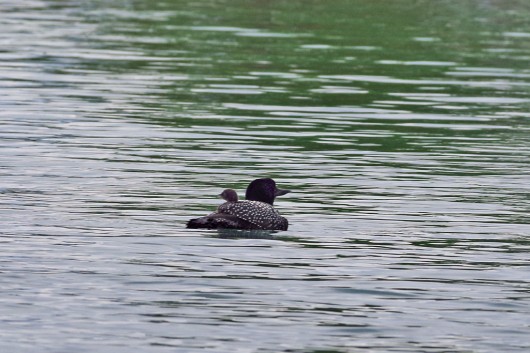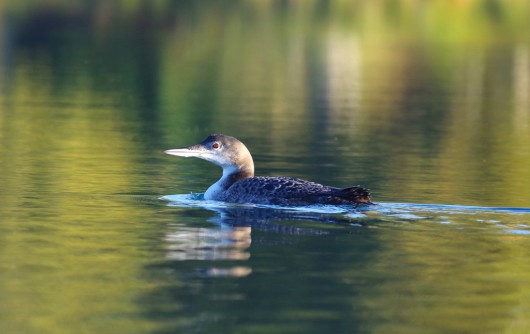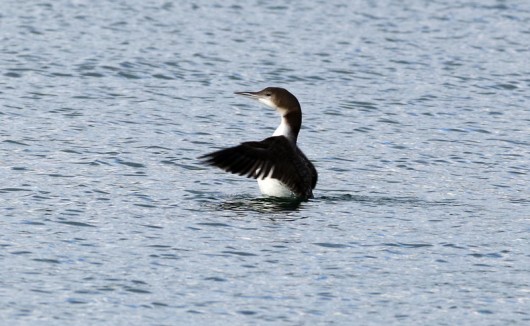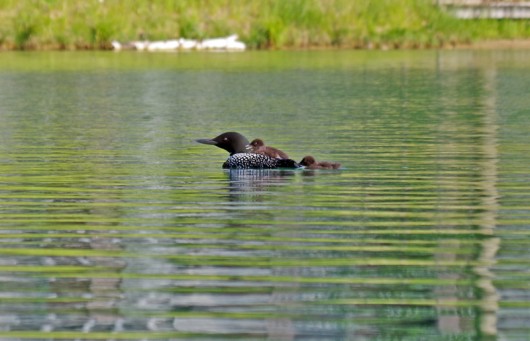
In early June, this Common Loon was sitting on the nest on the west side of Belly Button Island–the island in the north part of Long Lake. Its mate, who shares nest-sitting duties, was out fishing. Great news: by June 17th, when this next photo was taken, we can announce a successful nest.

Here’s our one loon chick, riding on a parent’s back. The mate was nearby, apparently the father because he was nervously posturing in vulture pose. He did this even though we were very far off with a telephoto lens, quietly proceeding in our small pontoon boat with its peppy 15 hp outboard.
The pair is a little nervous now, rightfully so. Long Lakers will all hopefully give the family a wide berth. But there are Bald Eagles looking for lunch. Big pike lurk about. And I don’t like the look in the eye of that big-headed, turkey-platter-sized snapping turtle. You know, the one with all the green moss clinging to its back. Hopefully this young one survives to its October adolescence.
The pair nesting on the island near the public access seems not to have fared well. Early in the week, the loon was on the nest. Since we saw their nest activity even before the nest went into full swing on the bigger island, and incubation periods being what they are, the chicks in the lower lake should have hatched first. Instead, on June 18th–with both loons fishing in the lower lake, I kayaked close enough to the nest to see that it was empty. Not even any egg shells. And no sign of any chicks in the lower lake.
But the next day, we saw this loon back on the nest. The empty nest. It was squashing itself way low, even though we were far away. It was bobbing its head up and down–down close to the water.
 It’s very wrong-headed to anthropomorphize animal behavior. But these loons definitely tempt in that regard. We’ve taken to calling this photo The Mourning Loon.
It’s very wrong-headed to anthropomorphize animal behavior. But these loons definitely tempt in that regard. We’ve taken to calling this photo The Mourning Loon.
One chick, one precious chick. Please let me know if you’ve seen another. We’re still hoping maybe they’ve got it stashed someplace we haven’t seen.
If we keep our fish hooks at a distance, our power boats throttled back in their vicinity, and our fingers crossed, Long Lake can help a new member of this threatened species launch itself southward come fall.





















